| Home Travel Index | First Posted: Apr 16, 2013 Jan 21, 2020 | ||
Cuba Travel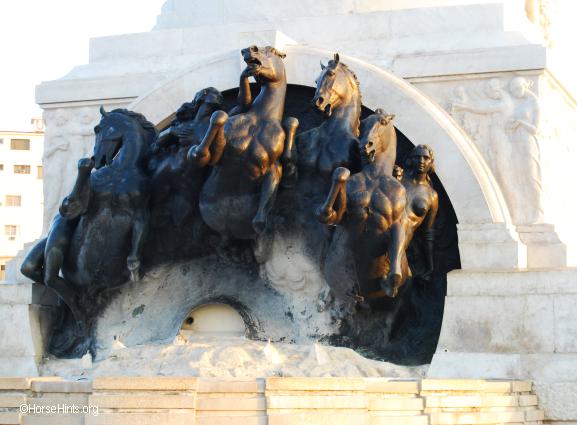 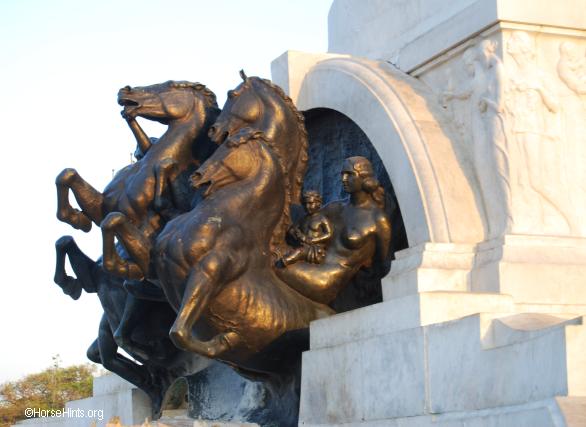 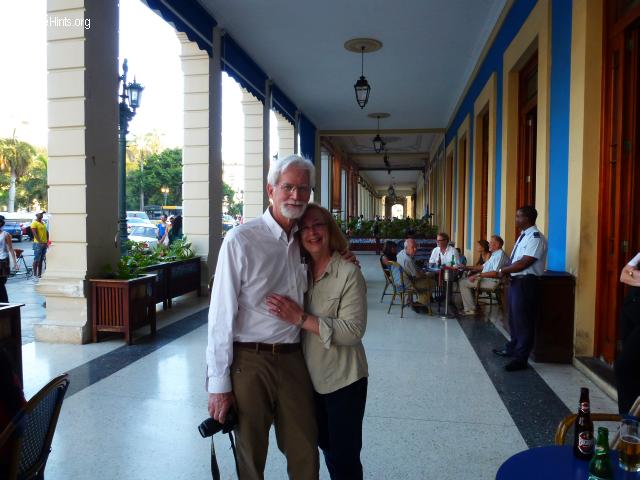 Bill and Debbie/Hotel Telégrafo, Cuba Note: Note Galleries: Circumstances such as rain and time changed the itinerary. Day 1: Arrive Miami. Flew from Reagan National Airport to Miami, Florida. (Overnight in Crowne Plaza Miami Airport.) Day 2: Miami/Havana. Boarded a non-stop flight bound for We were a bit off schedule because planes, airports, etc. As we all know not an unusual occurance when travelling. The schedule was changed. The following was done on our last day in Cuba. We visited the colorful Callejon de Hamel, one of the shortest but most interesting streets in Havana. Here discovered how the African Cuban religion of Santería, a fusion of African belief systems like spirit worship and Christianity, is portrayed in the street art and music. We heard from Elias Aseff Alfonso, saw the art, heard rumba music and saw dancee. Prolific murals adorn the neighborhood and reflect the culture and religious beliefs of this area. Had lunch at a local restaurant in the center of Old Havana, followed by a leisurely orientation walk with our guide through the vibrant cobblestone streets. Explored the Used Booksellers Market, a cross-cultural treasure trove for readers of every genre. Met local independent booksellers and engaged in friendly conversation with Cuban readers about popular Cuban and American literature. After time to rest at the hotel, engaged in a discussion with a panel of English-speaking Cuban experts on the history of U.S./Cuban relations in the 20th & 21st centuries with the opportunity to ask questions in an uncensored format. (Accommodations: Hotel Telégrafo).
Day 3: Havana. Visited a primary school (ages 5-12) located in a beautiful historical building which has been carefully renovated by Havana's Office of the Historian. Was a special holiday in Cuba honoring children so most were on field trips. We saw a few young children when they were let out to play. Talked with a school guide about Cuban education. Had lunch at a local restaurant, followed by a visit to the Ludwig Foundation.
Met with the owner or general manager and some of the workers of one of Havana's finest and most interesting new restaurants, El Gijon. Heard firsthand how new businesses - especially restaurants - get started, find working capital, and make a profit in a society where private business ventures are almost unknown. Also, learned about the history of the "Association" restaurants, of which El Gijon is one of the best. Afterwards, enjoyed dinner at El Gijon. Las Terrazas Day 4: Havana & Las Terrazas. Departed for Las Terrazas in Pinar del Rio Province, a "must see" in Cuba and known worldwide for its magnificent, scenic beauty. Pinar del Rio Province is also home to much of Cuba's tobacco farming. Las Terrazas was founded shortly after the Cuban Revolution in 1959 as a model community, where local farmers, known as campesinos, moved closer together in order to help each other overcome the hardships of sleeping in huts with thatched roofs, of living without electricity and of living without local schools or medical services. Visited the Clinica Las Terrazas to learn how medical services are handled in rural Cuba. Here the nurses and doctors believe in non-traditional treatments and specialize in homeopathic remedies. Learned how locally-grown plants and other materials are used to prepare remedies and discuss both the merits and problems of homeopathic versus manufactured pharmaceuticals. Cafe Maria, Las TerrazasVisited the oldest member of the community, Maria. She is the sole proprietor of the town's only coffee shop, Café Maria, where she and her family have been welcoming visitors for years to enjoy the "best coffee in the country." Discussed coffee culture in Cuba and throughout the world and how cafes act places for social interaction. 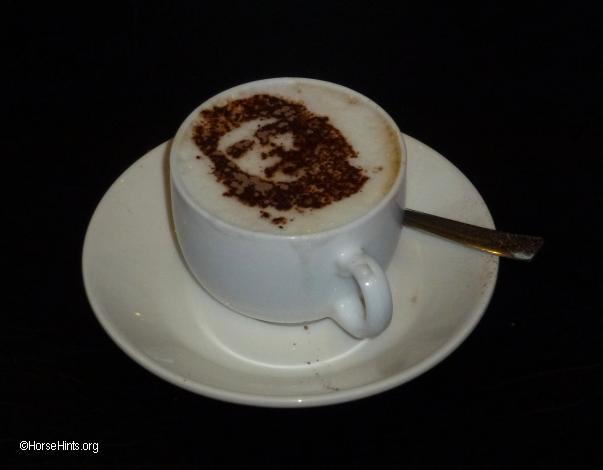 This coffee was iced and unbelievably delicious. In fact, usually I do not like coffee in any form, candy, cake, etc., but absolutely loved this drink. It was as though I were drinking a milk shake! Las Terrazas is now part of UNESCO's Biosphere Reserve, much of it reforested coffee plantation. Real reforestation began in the late 1960s by the local farmers who were concerned that their land had been degraded by former French coffee barons. Engage in a lively exchange with members of a local farming community and discuss with Cuban Guajiros (farmers and cowboys) the importance of reforesting. It was pouring rain so we did not go to the plantation. Enjoyed a country-style lunch prepared and served outdoors at a local farmhouse near Las Terrazas. Visit the art studio of Lester Campa. Shared his unique paper recycling process, the results of which are used for various artistic items, and explained the methods used to create the paper. On the way back to Havana after lunch, we had the distinct pleasure of visiting "Fusterlandia", the home and surrounding neighborhood of "The Picasso of the Caribbean",  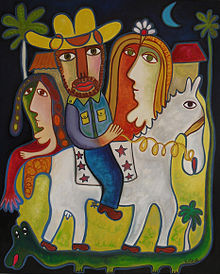 José Rodríguez Fuster 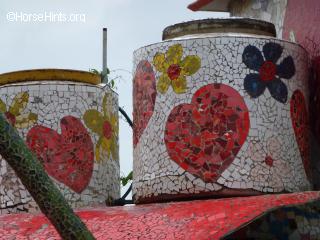     José Rodríguez Fuster art and studio Returned to Havana and enjoyed the remainder of the day at leisure. Day 5: Havana, Cienfuegos & Trinidad. Departed from Havana and drove along Cuba's "autopista" highway. Continued through small towns and villages en route to Cienfuegos, known as the "Pearl of the South" and the capital of Cienfuegos Province on the southern Caribbean side of the island. Continued to a ration store where your Cuban guide explained the system of rationing, the two-currency system, as well as the difference between Ration Stores, Cuban Peso Stores, (Cuban state workers receive a portion of their wages in convertible pesos, the rest in national pesos. Shops selling basics, like fruit and vegetables, generally accept only the normal peso, while "dollar shops" sell the rest. The word "pesos" may refer to both non-convertible and convertible money. Cuban convertible pesos are 25 times more valuable, but this does not completely eliminate the confusion for tourists: since goods bought in national pesos have controlled prices, tourists are sometimes confused by prices perceived as "too cheap.") and CUC Stores (Better quality goods but more expensive. Many of these stores are frequented by the tourists and take only the CUC). Enjoyed a lunch at a local restaurant and then explored the main square and the Punto Gordo peninsula.
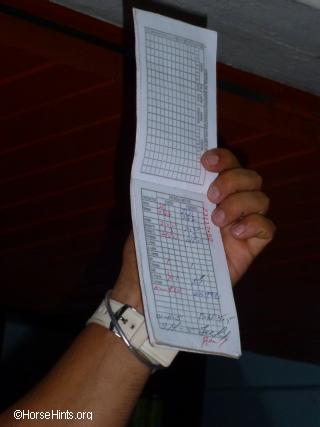 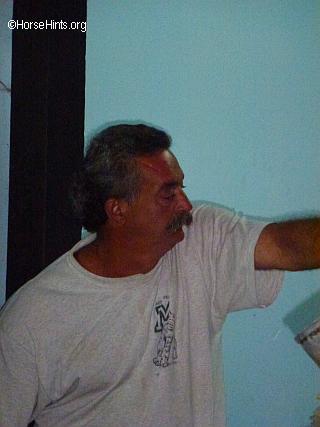 Top: Ration Store, Left: Ration Card, Right: Store Manager Cuban Ration Store Enjoyed a singular opportunity of engagement in an educational exchange with the faculty, staff and students of the Beny More Art School in Cienfuegos. Learned how students are trained in the visual and musical arts in this institution, and discussed the similarities and differences between Cuban and the American educational programs in music and the arts. Beny More, considered by some to be Cuba's most famous singer, was a native of Cienfuegos, and he is honored and remembered by this institution which carries his name. Continued the drive along the Caribbean coast to the charming old Spanish colonial town of Trinidad. Designated a UNESCO World Heritage site, Trinidad is one of the best preserved towns in all of Latin America. Dinner at the beach front hotel located on Playa Ancon on the Caribbean Sea. (Accommodations: Las Brisas Del Mar.) Plaza Mayor, TrinidadDay 6: Trinidad. After breakfast this morning, visited the Casa del Alfarero, a pottery house that was founded and and has been managed by the Santander Family for generations. Today we learned the process of ceramic production. 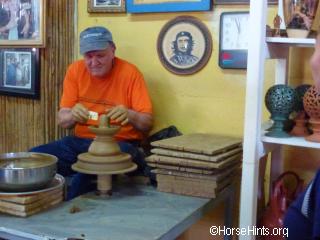 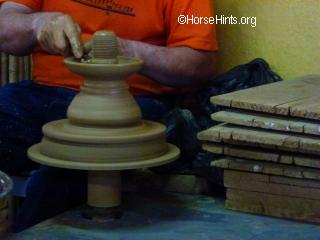  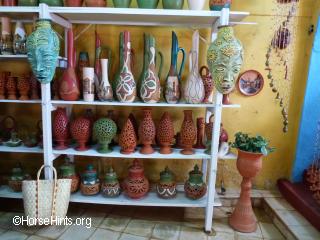 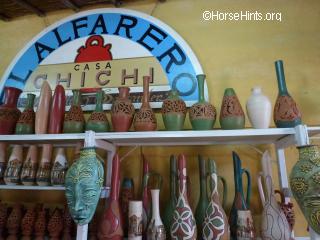 Continued to one of Trinidad's many "casas particulares" or bed and breakfasts, where we enjoyed a tour and a discussion with the owners. Learned how bed and breakfasts are one of Cuba's new entrepreneurial opportunities in a society where the state typically owns most enterprises. Asked questions and shared insights about U.S. businesses, including the ever popular bed and breakfasts that are ubiquitous in the U.S.
Continued to Templo de Yemaya, where a Santería Practitioner along with some of the religion's devotees explained the basic principles of Santeria. Discussed the role of religion and religious organizations throughout both Cuba and the US. Manaca Iznaga Observation Tower Lunched today at the beautifully restored Hacienda de Manaca Iznaga, located in the heart of the Valley de los Ingenios, a series of valleys once known as a center for sugar production. Built in the late 1700s, the mansion displays an exhibition of paintings depicting the lives of slaves on sugar plantations. After lunch learned, through the stories of local families, about the region's harsh past, where great fortunes were made on the backs of African slaves, and where many descendants of the Afro-Cuban slaves still reside. Our next visit was to a wonderful and enlightening local Cuban Maternity Home, where we meet with residents and staff members. Toured the home and discussed with residents and staff members the medical services provided to expectant mothers and the role of families in both Cuban and US society. Did not do this. Rested at the hotel, dined this evening in a private home and restaurant (known as a Paladar) for a home cooked meal. Met with the multigenerational family members, and got an intimate look into local Cuban daily life while enjoying a delicious meal. After dinner, joined Cubans at either Casa de la Musica or Casa de la Trova for a community block party, a celebration where locals from all walks of life and generations come to eat, drink, build friendships, and discuss neighborhood matters. Enjoyed the celebration, regarded as one of the best experiences of the trip, and engaged in discussions with the locals about community life in Cuba and the US. Did not do this. 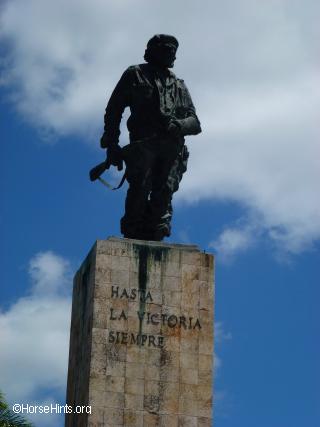 Che Guevara, Santa Clara 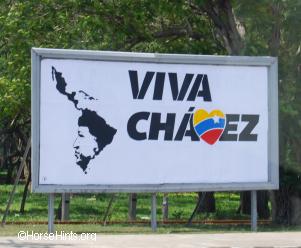 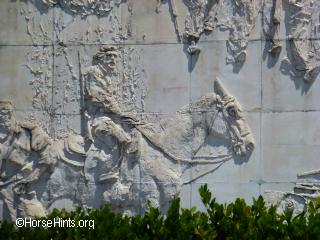 The picture of the sign, above on the top left, is NOT at the Mausoleum, however, along a roadway. I liked it so it appears here appropriately! 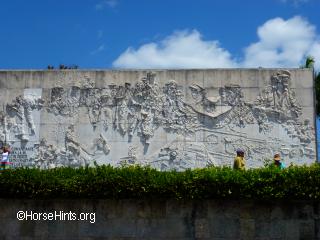 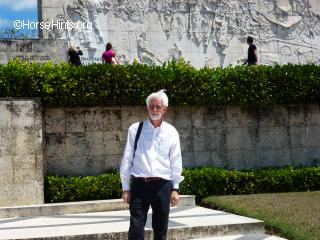 Day 7: Sancti Spiritus, Santa Clara & Havana. After breakfast, departed from Trinidad and visit the picturesque town of Sancti Spíritus, one of the original seven cities founded in Cuba by the Spanish five centuries ago, and home to Cuba's oldest church, the Parroquial Mayor. Here, we visited the Sancti Spíritus Medical University and discuss medical education in Cuba, conditions for medical students who practice abroad after completing their education and the career track for graduated Cuban doctors in Cuba, as well as medical practices in Cuba and the USA, in general. Continued to the town of Santa Clara. Enjoyed buffet style lunch in Santa Clara's Los Caneyes Hotel. Enjoyed a special visit to the Santa Clara Music and Performing Arts School, with dance, theater and music performances by the students. Participated in a discussion with faculty and students about the role of music and education in the USA, and the impact of music on Cuban life and its importance in education in Cuba. (Accommodations: Hotel Nacional or Telegrafo) Hemingway's house
Day 8: My husband and I did not go on the bus this day. We had been sitting for three days in the very back because there was no rotation of seats. We did enjoy the day together in Havana. I must say the Cuban Daiquirís are wonderful! Havana, Alamar & Cojimar. This morning, drove to Finca Vigia, Hemmingway's Cuba retreat and visit Cojimar, the fishing village that was the setting for his book, "The Old Man and the Sea." Then, drive to the district of Alamar on the outskirts of Havana. Started as an expansive social housing project in the 1970's, these Soviet-style pre-fabricated concrete apartment blocks are now home to hundreds of thousands of Cubans. Meet with some local residents and discuss the process of buying and selling or otherwise obtaining housing in Cuba. Also learned about the tradition of having multi-generational living arrangements.
Proceeded to a local Elementary School in Alamar. Interacted with the children in their classrooms as part of an English lesson and participated in a discussion session with some of the school's administrators and teachers about Cuba's education system and how it compares to that of the United States. Among the buildings in Alamar are community gardens, called Organoponicos, where residents grow fruit, vegetables and herbs for their own consumption and local sale. Similar to co-op and community gardens in the United States, these Organoponicos facilitate community development and offer Alamar's residents access to fresh produce. Enjoyed a visit to one of these Organoponicos, which few visitors to Cuba have the opportunity to do. Lunched today in an open-air organic feast served by community volunteers and workers from Alamar. This afternoon, visited Beth Shalom Synagogue Pharmacy, where pharmaceuticals that are donated by visitors from throughout the world are distributed, free of charge, to everyone who needs them, regardless of religion. Afterwards, returned to the hotel. Farewell dinner, band and dancing. Day 9: Departed Havana/Arrived Miami. After breakfast in the hotel went to see Lic. Elias Aseff Alfonso art and hear rumba music and dance. Transferred to Havana's Jose Marti International Airport and check-in for our charter flight back to Miami. 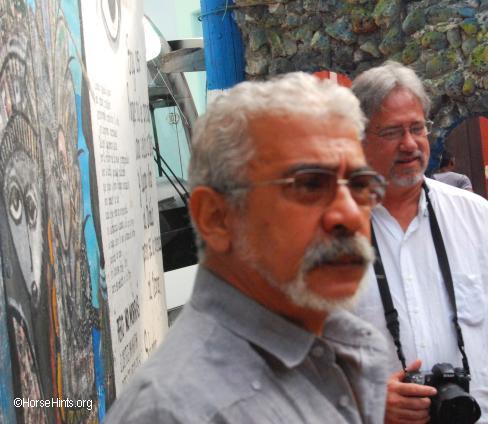 Salvador Gonzáles Escalona/Cuba/April 2013 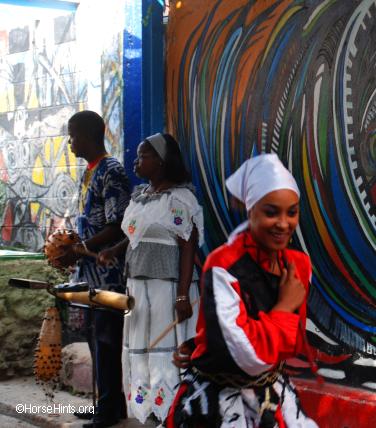 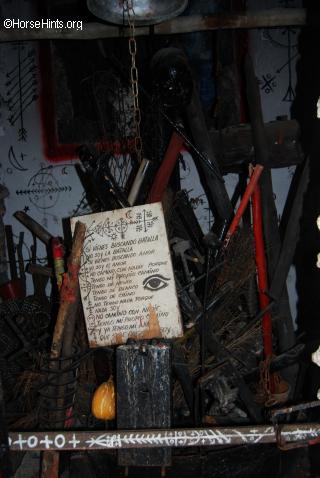 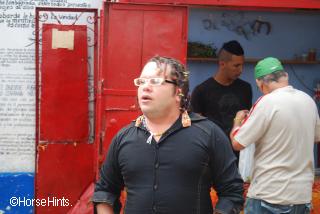 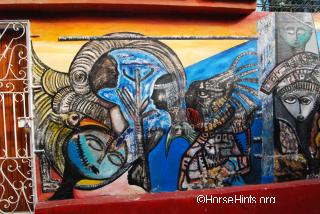 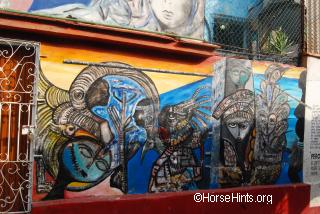 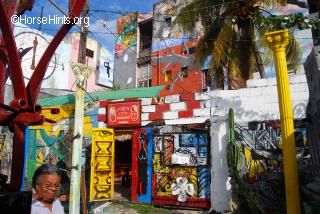 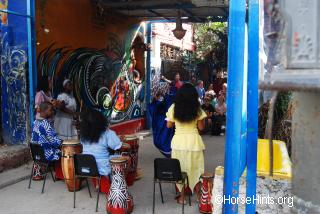 
 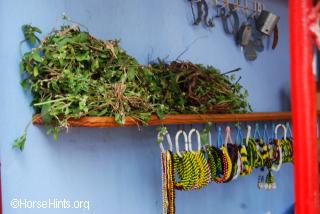 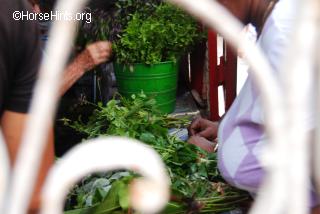 Havana's Callejón de Hamel (Hamel Alley). It's just a tiny space caught in a neighborhood where an effort of cultural rescue and expansion led by fine artist Salvador González Escalona has been underway since 1990. This area was named after a French-German man who earned the moniker of Fernando Hamel. Mr. Hamel was a smuggler who ran weapons during the American Civil War. He eventually settled in Havana, Cuba in the skid row of Cayo Hueso. It was here that "Salvador" transformed this area into the popular culture of today.
Salvador Gonzáles Escalona, born October 21, 1948 in Camagüey, Cuba, is a Cuban painter, muralist and sculptor. His artist name is Salvador. His work is known as an "afro-cuban" style. He describes his work as a mix of surrealism, cubism and abstract art. Salvador has no formal artist education, but as early as in 1968 he had his first art exhibition "Arte Popular Cubano" in "Museo de Artes Decorativas", Havana. In the 1980s he had a series of art exhibitions at Cuba. In 1986 he had an exhibition at Seychelles and in 1987 an exhibition in Rome, Italy. April 21, 1990 he started with murals and sculptures in the street Callejón de Hamel, near University of Havana. For sculptures he used scrap objects like bathtubs, hand pumps, pin wheels etc., and for the murals he used different kind of available paint, including car enamel. Even though the first four years became difficult, he was inspired by local inhabitants and visitors to continue his work, and little by little, the street was transformed from a slum area to an enthusiastic Afro-Cuban centre. There are workshops for young Cuban children to learn painting. Every Sunday there is Rumba-music, and every Friday Cuban music in the street. This is still Salvador's artistic headquarter. Later Exhibitions From 1990 he is represented at various exhibitions at Cuba. From 1992 he had several exhibitions abroad:
Norway Denmark Mexico Puerto Rico USA Spain MuralsBesides several murals at Cuba, he has done murals abroad: Venezuela Norway Mexico Denmark USA St. Martin Puerto Rico Italy SculpturesBesides several sculptures at Cuba: Denmark |